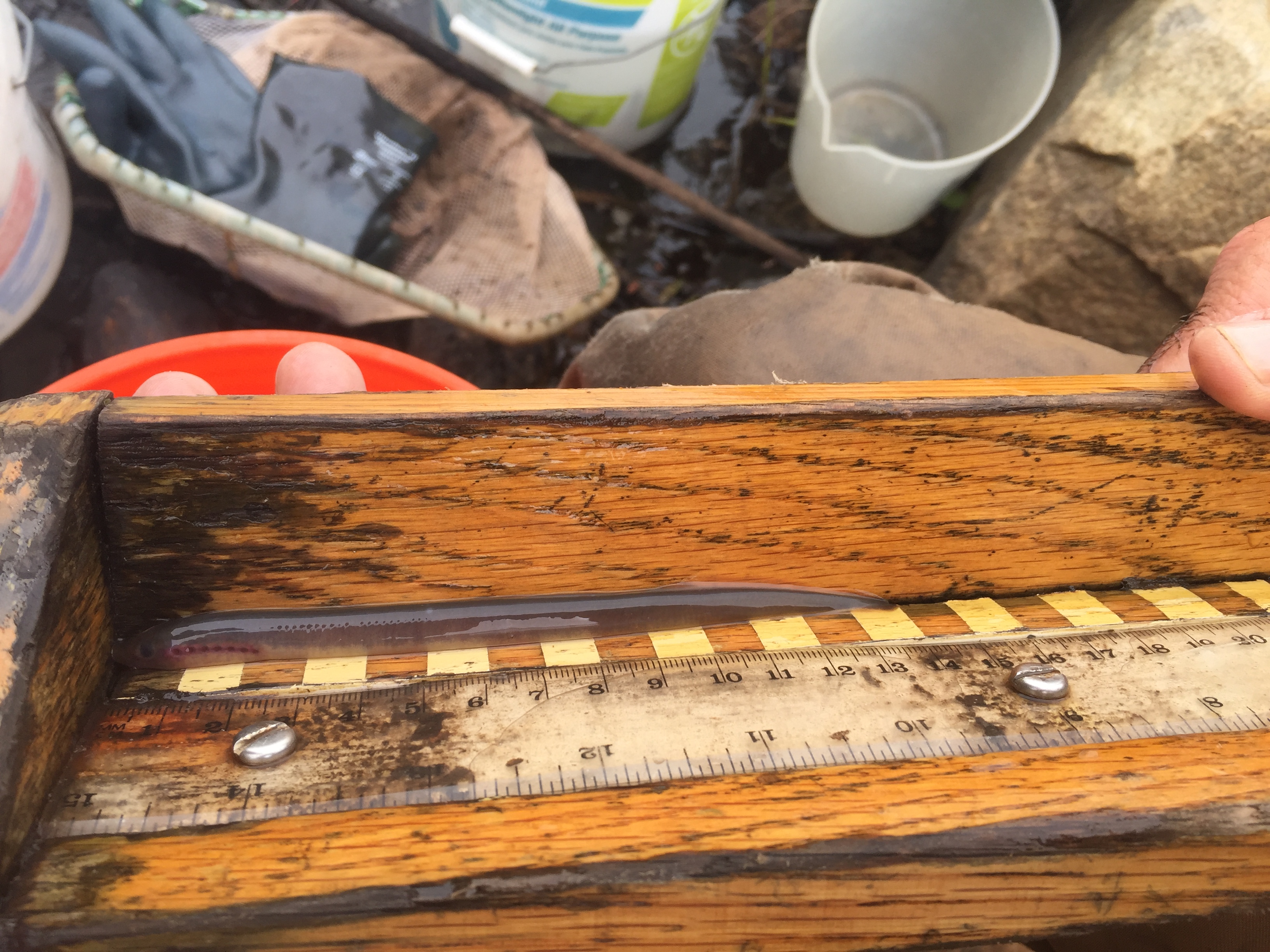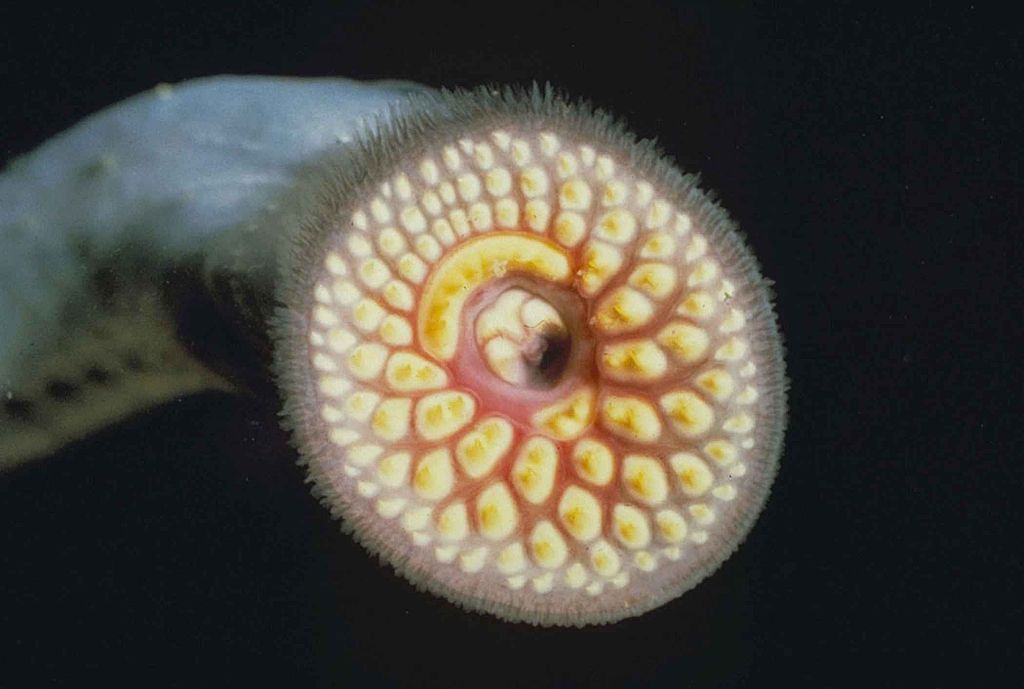
Today’s guest post comes from Hillary Ballek, field scientist at CFE/Save the Sound. Hillary monitors dam removal sites within Connecticut to assess biological health of streams and wetland areas.
The sea lamprey is an anadromous species of fish native to the Connecticut River, migrating from the ocean to fresh water streams to spawn during the summer. Sea Lamprey are unique in that they build nests for their eggs within the stream, making them successful ecosystem engineers. A mating pair will find a suitable rock substrate where they carry rocks downstream from a specific point, eventually creating a depression in which the female will lay her eggs. Some lamprey will build community nests in which multiple mating pairs create a large singular nest to share. Adults die upon spawning. Young lamprey may stay in freshwater for up to 10 years before migrating to the ocean, acting as an important food source for many riverine species. After living in the ocean as adults they will reach sexual maturity and navigate back into freshwater, attracted by pheromones given off by other lamprey in streams.
Although the sea lamprey are a valuable and natural part of the Connecticut River’s ecosystem, they are not always seen positively in the public eye. Lamprey possess a long eel-like body type and have a round suction cup mouth ringed with multiple layers of raspy teeth. Populations of lamprey introduced to landlocked lakes such as the Great Lakes and Lake Champlain have become invasive and parasitic to native fish and can prove detrimental to many native fisheries in such places. This, in combination with their less-than-appealing appearance, has assigned even the most innocent of lampreys a generally negative reputation. In reality, anadromous lamprey populations native to rivers such as the Connecticut River do not actually feed on other fish after re-entering freshwater. Upon reaching sexual maturity lampreys will stop eating altogether. After hatching, larval lamprey, called ammocoetes, burrow into mud and feed on algae, small organisms, and waste. Adult lampreys are important in improving the chemical balance within streams by transporting trace elements from the ocean to freshwater.

CT DEEP conducts fish counts at several fishways throughout the state in order to monitor populations of sea lamprey within Connecticut. Monitoring lamprey population is necessary to ensure the success of such ecologically important creatures. Most fishways have a camera or automatic fish counter to accurately estimate the passage of lamprey. The Leesville Dam located on the Salmon River in East Haddam, however, does not operate with any such devices, so an annual lamprey nest survey on streams above this location is necessary. This year, the survey was moved upstream of the Norton Mill Dam removal site located on the Jeremy River, a large tributary to the Salmon River. The Norton Mill Dam was removed in 2016 and had previously acted as a barrier to any fish migration, and since the dam’s removal, it has been a priority to see the success of lamprey migration through the prior dam site.
Every year just after lamprey spawning season, DEEP staff and a community of hardy volunteers will dedicate several workdays to wading through rocky streams, deep water, and tick infested marshes in order to conduct an exhaustive survey of a suitable lamprey habitat along the stream and its tributaries. Nests are recognizable by their half-moon shaped tail-spills of upturned rocks adjacent to a substantially deep hole. With that said, it is easy to get tripped up on false nests, where lampreys choose a site and begin making a nest before abandoning it in search of better real estate, as well as relic nests from years past, and the nests of fall fish that can easily be mistaken for lamprey nests.

This year, the lamprey survey was finally concluded in mid July by a group of slightly damp yet happily unscathed volunteers and employees. The nest counts show a healthy population and a positive outlook for the future of our misunderstood friends, the Sea Lamprey.
